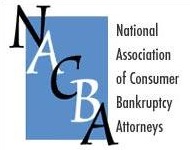New and not so new bankruptcy lawyers muddle the difference between “exempt” and “exclude“. It makes a world of difference.
You have to make the call when listing property of the bankruptcy estate, usually various kinds of retirement assets. All of the debtor’s assets and legal rights come into the estate.
Exemptions allow you to extract assets from the estate . The tax refund, for example, is property of the estate, even though not received; a grubstake exemption enables the debtor to remove that asset from the estate and keep it for his fresh start.
If, however, an asset is not property of the estate, it isn’t necessary to exempt the asset. It never enters the pool of assets available to creditors but for exemptions. If it’s excluded from the estate, no exemption is required.
Retirement assets such as third part pension plans and 401(k) plans are the classic example of assets that simply aren’t property of the estate. Take a look at §541(c)(2):
A restriction on the transfer of a beneficial interest of the debtor in a trust that is enforceable under applicable nonbankruptcy law is enforceable in a case under this title.
Thus, an anti alienation provision in a trust for retirement is enforceable in bankruptcy and operates to exclude the trust corpus from the estate.
The application of this provision was settled when the Supreme Court decided Patterson v. Shumate. The anti-alienation provision in the retirement plan in question was “applicable non bankruptcy law” the kept the retirement plan from entering the estate.
The point of confusion arises because the official forms still call for the scheduling of such assets, even if not part of the estate by reason of case law. I list 401(k) plans and put in the description “NOT PROPERTY OF THE ESTATE”. I put the face value of the account in the description, not in the column for the value of the asset. To do otherwise suggests that the value is available for creditors.
You may need to schedule all property that the debtor has an interest in, but not all property requires an exemption to keep it.
Cat courtesy of Eustanquio Santimano
Skunk courtesy of Donjd2









